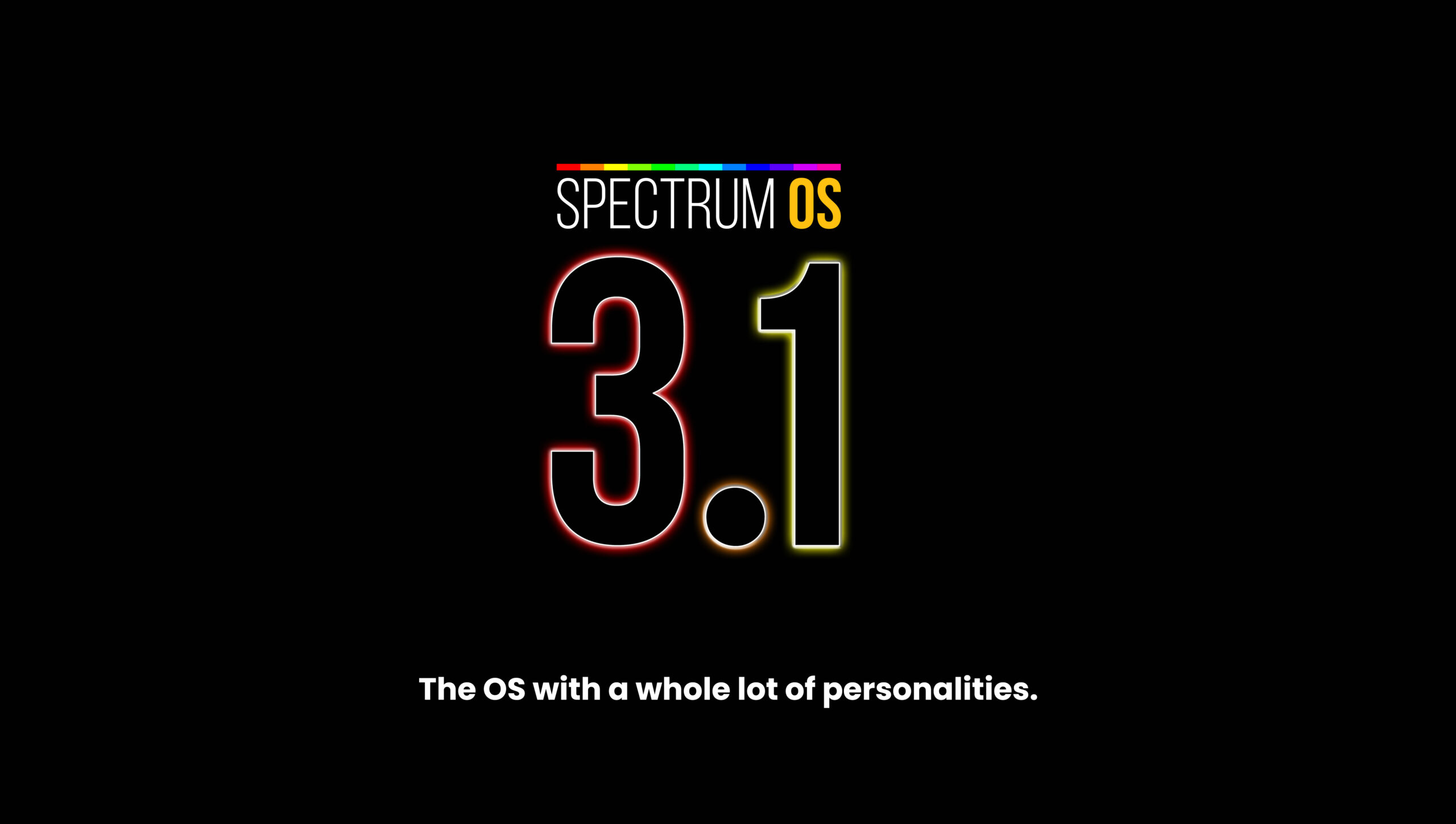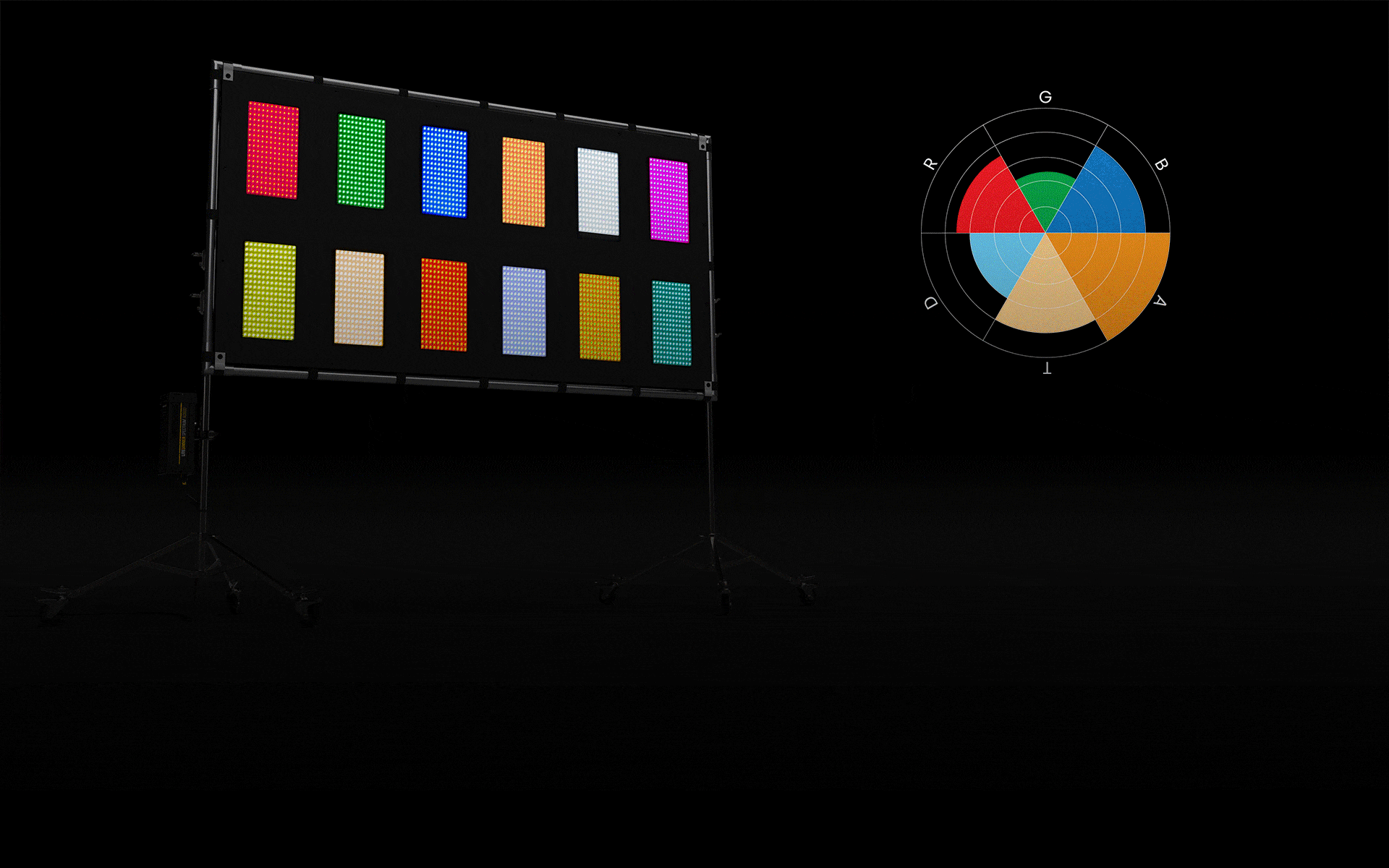
Using LED video walls on-set is now a common practice. High-resolution video walls combined with groundbreaking content generation with gaming engines have enabled a new way of shooting. The Video DMX personality in Spectrum OS 3.1 provides control to match the LED video walls’ color output. In combination with Auroris and LiteMat Spectrum, lighting technicians can create cinematic quality lighting while using and matching to video walls. Controls like CCT, tint, color space, spectrum depth, and RGB values provide the flexibility needed when working with mixed lighting technologies.


Spectrum OS 3.1 completely revamps the DMX personalities in Spectrum dimmers. The new Series 3 DMX modes offer highly sought-after improvements and new modes to fill an extensive range of applications.
Updated Spectrum DMX modes now enable the ability to control the Tint in addition to CCT. Additionally, new personalities can control RGBATD color channels directly, perfect for color mixing with lighting consoles.
DMX load-in presets quickly switch between DMX address, personality, and series combinations. Now it’s easy to move to a different DMX configuration using one RDM command or a one-button press on local control. You can easily store up to ten different load-in presets.
The USB-A port on the LiteDimmer AC600, AC/DC 200, and AC/DC 400 makes updating software a breeze, enables many more functions through the USB port.
Saving service logs with detailed information and error codes makes it easy to troubleshoot your dimmer. Eliminate the repetitive chore of digging through menus by cloning the settings of your LiteDimmer to another LiteDimmer with the save/load dimmer settings features.
In Spectrum OS 3.1, your LiteDimmer can also format and upload OS 3.1 update files to a USB stick. Gone are the days of mismatched firmware, and the need to carry around a computer to apply updates.

Streaming ACN (E1.31) is fully implemented in the LiteDimmer Spectrum AC/DC 200, the AC/DC 400, and the AC 600. This standard ethernet-based protocol efficiently transports DMX universes over the network and eliminates the need for a DMX gateway. Known for its ease of use, sACN makes it fast and simple to set up and connect many devices, like the AC/DC 200, the AC/DC 400, and the AC 600, to a lighting network. The dimmer can be set to search for sACN, Art-Net, or both signals on the connected network. sACN is supported by most professional lighting consoles or lighting control programs and seamlessly works with the AC/DC 200, the AC/DC 400, and the AC 600 dimmer.
Offering you the option to choose your preferred ethernet-based protocol. Art-Net 4, like sACN, efficiently transports DMX universes over the network and eliminates the need for a DMX gateway. An added benefit of Art-Net is its ability to allow 2-way communication between devices using both DMX and RDM lighting data. It is straightforward to setup the AC/DC 200, the AC/DC 400, and the AC 600 with menu parameters for selecting the Art-Net Net, Sub-Net, and Universe. Using RDM over Art-Net is an amazing way to control every setting of the AC/DC 200, the AC/DC 400, and the AC 600 dimmer remotely. Art-Net™ is a trademark of Artistic License Engineering Ltd.
Art-Net and sACN gateway takes full advantage of the integrated network switch and the 5-Pin DMX hardware on the AC/DC 200, the AC/DC 400, and the AC 600. The gateway translates Art-Net or sACN lighting data into DMX512 and outputs the signal through the 5-Pin DMX XLR ports. This enables bringing ethernet based communication into the AC/DC 200, the AC/DC 400, and the AC 600 and daisy-chaining out with normal 5-Pin DMX, reducing the amount of networking equipment in the rig. This feature means fewer cables and allows you to create practically any network layout you desire.

Spectrum OS 3.1 gives you greater control of your dimmer by offering the ability to choose between four dimming curves: Exponential, Linear, Logarithmic, and S-Curve. Exponential, the most common, allows for greater low-end dimming control. Linear dimming directly translates the dim level to light intensity. Logarithmic allows for greater high-end dimming control. And finally, S-Curve dimming gives you greater control over both the low and high-end dimming ranges.
With an emphasis on local and hands-on operation, the Spectrum OS 3.1’s Cue function places up to four “looks” at your fingertips. The Cue Playback function has the ability to record the entire output including intensity, CCT, tint, saturation, and accent color. Easily hold, bump and flash the output when the actor hits a mark or swap to a brighter look when the talent opens the door. The Cue Playback function brings powerful hands-on operation to the on-set lighting technician.
Parameter presets offers six pre-set values each for CCT, accent color, and saturation. Quickly select common color settings with the press of one button. Parameter presets streamlines the lighting workflow by eliminating scrolling through values. The user can also replace the factory parameter presets with custom selections.
A simple yet effective feature, Audition allows the operator to easily turn the fixture output off and on with the press of a single button. Audition brings the common task of “sampling” a light’s output into the hands of the user by turning the fixture off and on in order to gauge its effectiveness without having to change the current intensity or color.
The Nudge feature allows the user to combine the use of encoders and screen-side buttons which gives a higher level of control and speed when adjusting parameters such as CCT, accent color, saturation, and tint.
This feature is an intelligent power manager that looks out for you by allowing larger light fixtures to operate on ballasts with smaller power sources.
Operate the ballast in local mode while simultaneously outputting DMX signal to other Spectrum devices. Now one ballast can control many using DMX Transmit Mode.
Remote Device Management (RDM) allows nearly all settings of Spectrum OS 3.1 to be accessed over DMX networks by compatible devices. Convenient for when the ballast is inaccessible.
When DMX signal is detected, the Spectrum ballast immediately switches to override its operation from local to remote control. With the switch down, OS 3.1 shows live streaming data, often useful for troubleshooting.
Additional enhancements include Improved Color Science and Tint Feature, Streamlined Menu Navigation, Ballast Status Visibility, Enhanced Low-Light Color Consistency, and much more.